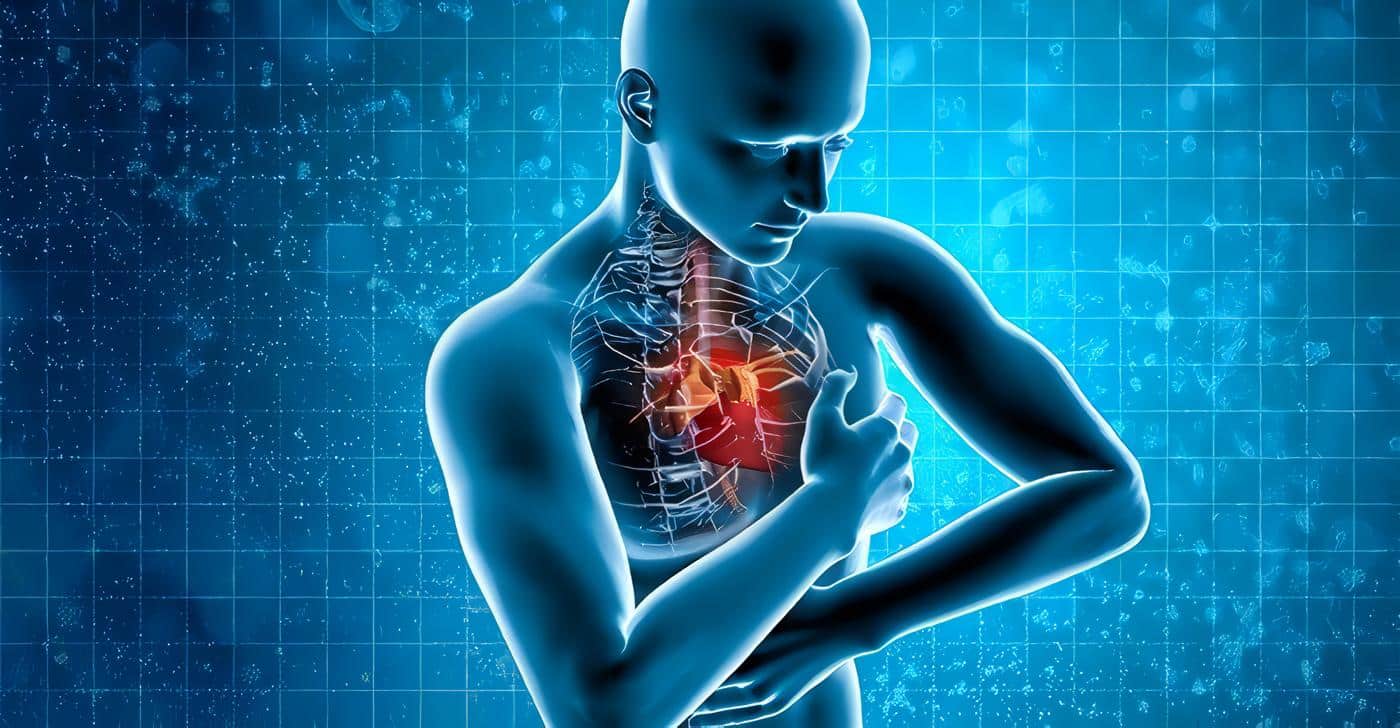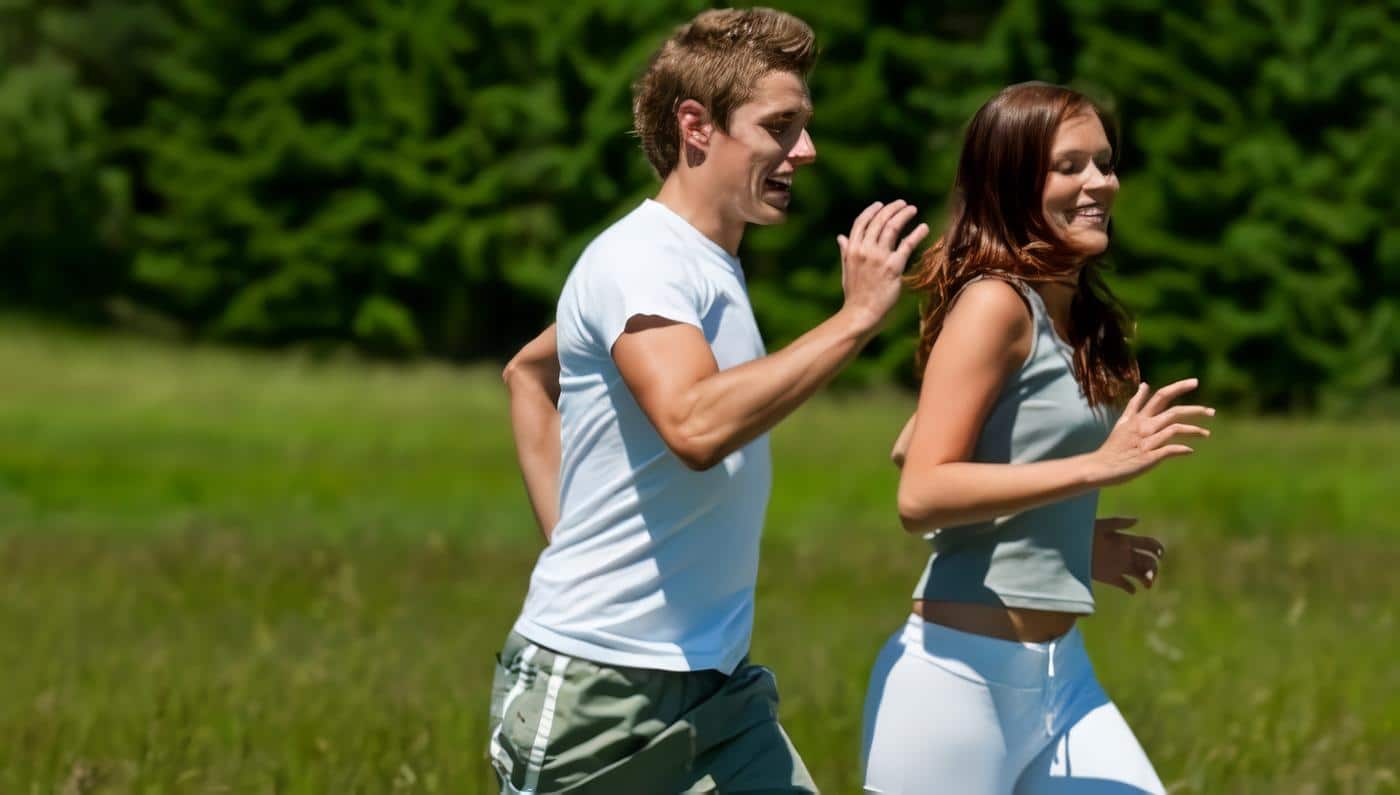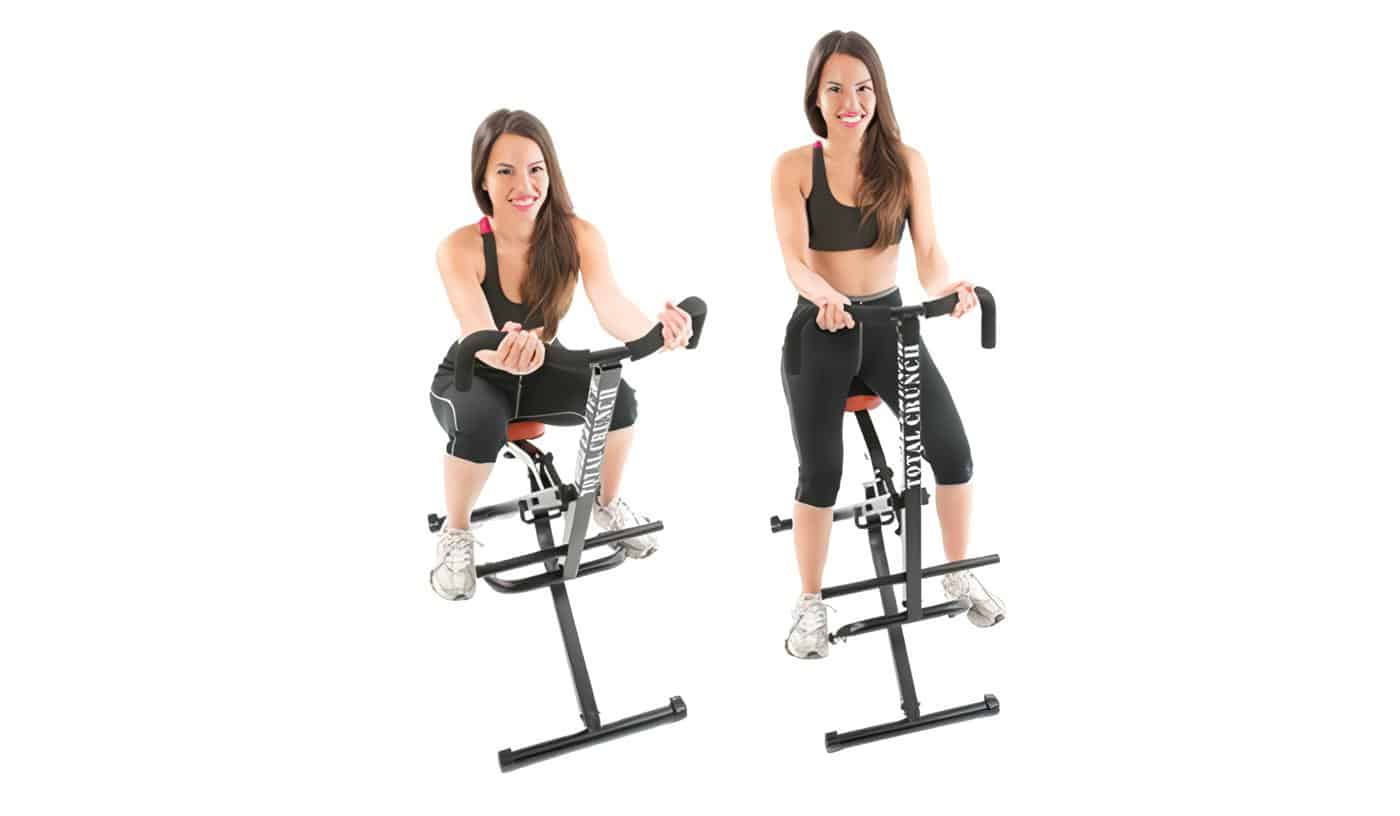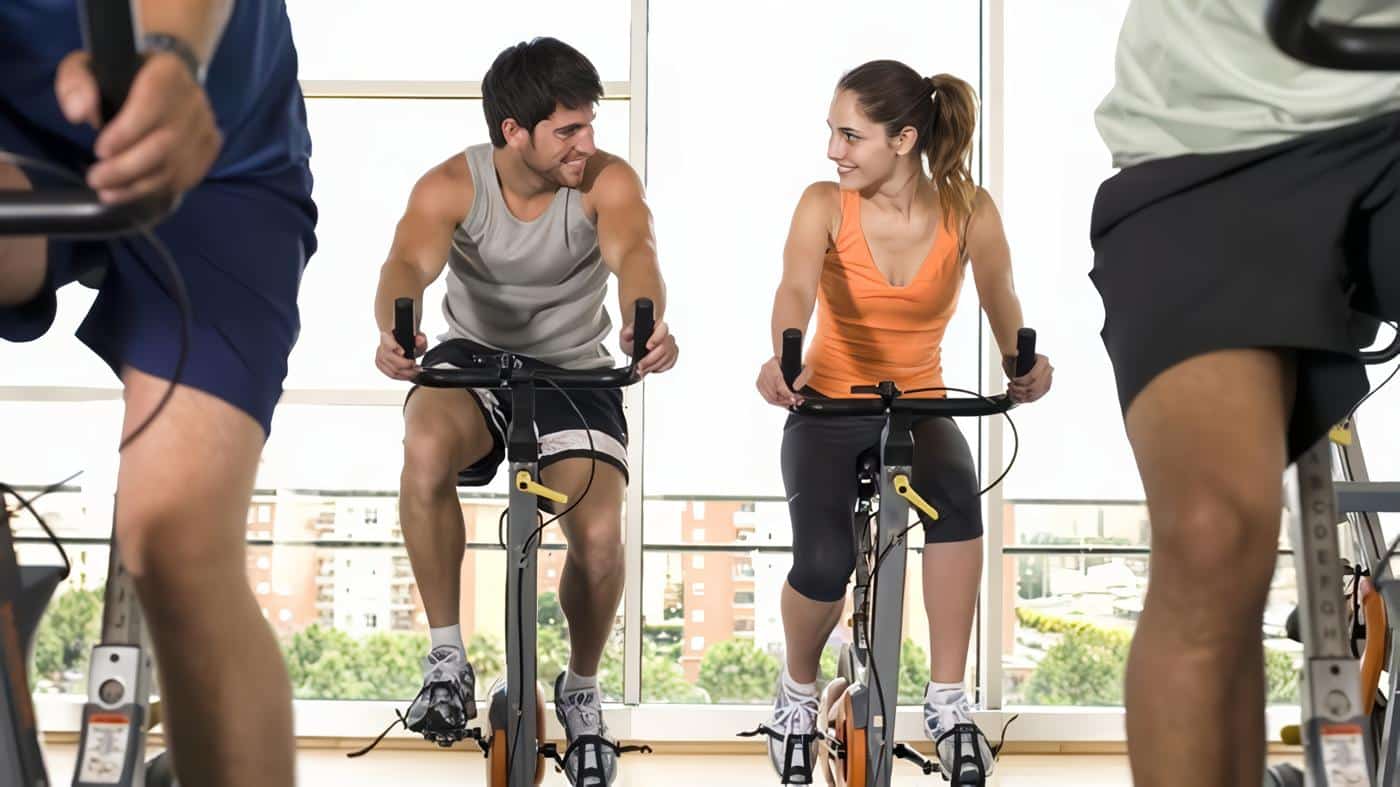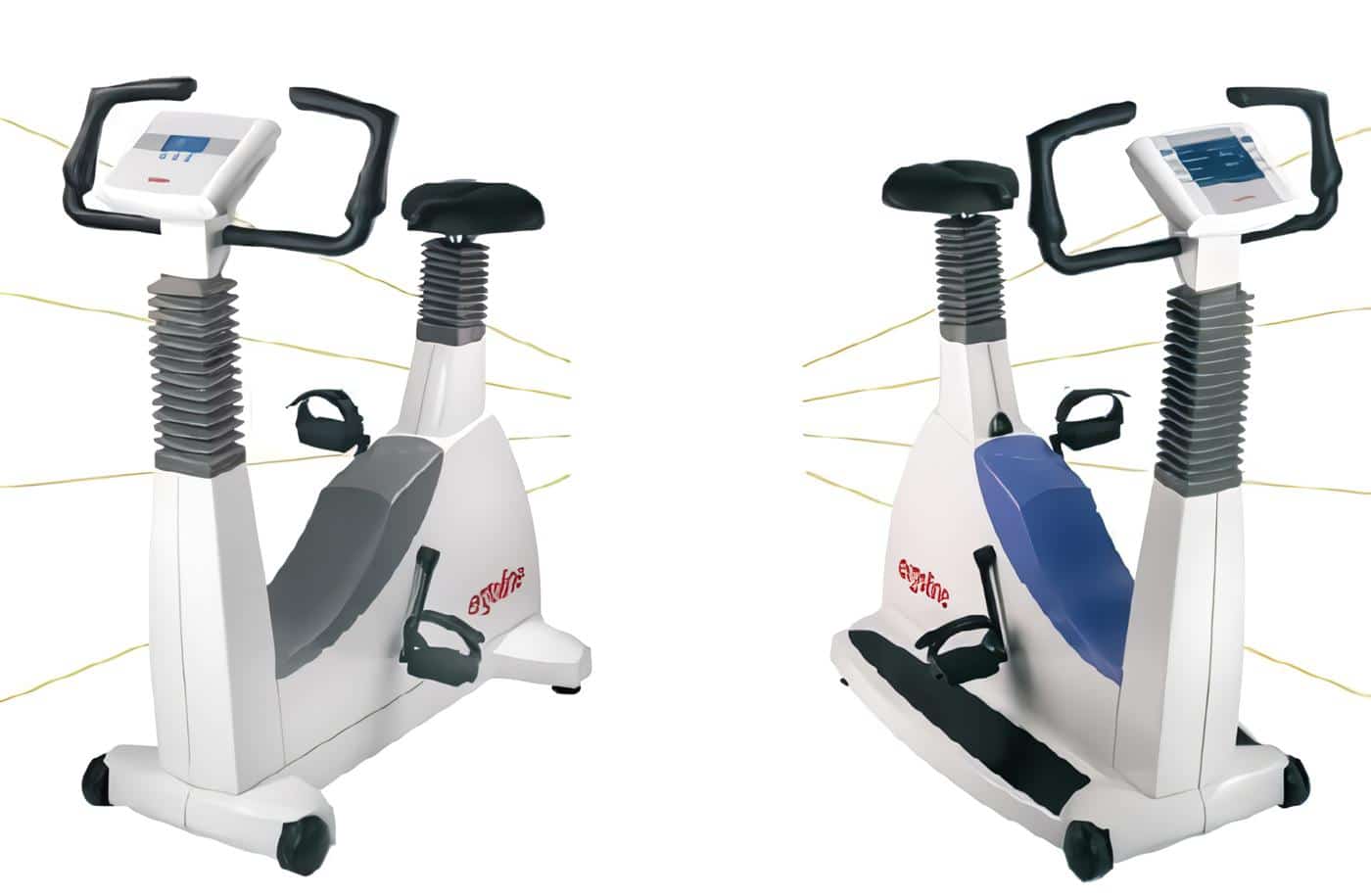(Gráfica 5) Cuando se realizan en cicloergómetros, se recomienda hacer un protocolo con aumentos de 25 a 50 Vatios cada 2 minutos. Se prefiere aumentar 25 en las mujeres y 25 a 50 vatios en los hombres, según el valor predicho para el individuo.
Las etapas de 2 minutos permiten obtener valores en las cargas submáximas mas ajustados a la realidad. Debido a que etapas mas cortas aumentan la carga cuando apenas esta subiendo la frecuencia cardíaca correspondiente al nivel de trabajo externo.
Las cadencias de pedaleo pueden inicialmente ser de 50 a 60 RPM. Pero en cargas altas es necesario ajustar la resistencia para aumentar las cadencias entre 60 y 80 RMP.
Mujeres 50 Vatios / 25 Vatios / 120seg / 0seg
Hombres 50 Vatios / 50 Vatios / 120seg / 0seg
Se registran los valores al final de cada etapa, el valor máximo logrado en una etapa completa, se usa para el cálculo del VO2pico. Se obtiene la carga por kg de peso corporal y se grafican los datos de las cargas submáximas.
Protocolos en Banda Sin Fin. Cuando se realizan pruebas en la banda sin fin, se recomiendan protocolos etapas de un minuto debidola mayor fatiga que causan.
Se recomienda una inclinación máximo hasta un 2% (45º son el 100%), con aumentos de 0.5-1 mph cada minuto, según el nivel predicho el sujeto.
 Gráfica 5. Test indirecto en cicloergómetro
Gráfica 5. Test indirecto en cicloergómetro
Mujeres 4.5mph/0.5mph/60seg/0seg/0%
Hombres 5.5mph/0.5mph/60seg/0seg/0%
El cálculo del VO2pico se puede hacer con la fórmula del ACSM (1):
VO2pico = 0.2 (vel) + 0.9 (vel) (fr incl) + 3.5
Donde: Vel= velocidad en m/min (1mph=26.8 m/min), fr incl = inclinación como fracción ( 2% = 0.02) y 3.5 como valor en reposo. VO2pico expresado en ml7kg7min.
Eventualmente se debe tomar la presión arterial y se recomienda registrar la percepción subjetiva del esfuerzo con la escala de Borg.
Una vez obtenido el valor del VO2pico se procede a calificar el resultado en el nivel funcional y se percentila el valor. En la tabla 6, se muestran los percentiles sugeridos por el ACSM.
Continuará en la siguiente edición. Agradecimientos por su ayuda y colaboración en este manuscrito al Dr. Oscar Ortiz.
Tabla 6.
VALOR DEL VO2pico HOMBRES |
|||||
Percentil |
20-29 |
30-39 |
40-49 |
50-59 |
60 + |
| 90 | 51,4 | 50,4 | 48,2 | 45,3 | 42,5 |
| 80 | 48,2 | 46,8 | 44,1 | 41,0 | 38,1 |
| 70 | 46,8 | 44,6 | 41,8 | 38,5 | 35,3 |
| 60 | 44,2 | 42,4 | 39,9 | 36,7 | 33,6 |
| 50 | 42,5 | 41,0 | 38,1 | 35,2 | 31,8 |
| 40 | 41,0 | 38,9 | 36,7 | 33,8 | 30,2 |
| 30 | 39,5 | 37,4 | 35,1 | 32,3 | 28,7 |
| 20 | 37,1 | 35,4 | 33,0 | 30,2 | 26,5 |
| 10 | 34,5 | 32,5 | 30,9 | 28,0 | 23,1 |
VALOR DEL VO2pico MUJERES |
|||||
Percentil |
20-29 |
30-39 |
40-49 |
50-59 |
60 + |
| 90 | 44 | 41 | 40 | 35 | 35 |
| 80 | 41 | 39 | 36 | 32 | 31 |
| 70 | 38 | 37 | 34 | 31 | 29 |
| 60 | 37 | 35 | 32 | 29 | 27 |
| 50 | 35 | 34 | 31 | 28 | 26 |
| 40 | 34 | 32 | 30 | 27 | 25 |
| 30 | 32 | 31 | 28 | 26 | 24 |
| 20 | 31 | 29 | 27 | 24 | 23 |
| 10 | 28 | 27 | 25 | 22 | 21 |
Referencias
- American College of Sports Medicine Guidelines for Exercise Testing and Prescription. (5ta. ed., pp. 153-240). (1995). Philadelphia: Lea & Febiger.
- JOINT POSITION STATEMENT. AHA/ACSM Joint Statement: Recommendations for Cardiovascular Screening, Staffing, and Emergency Policies at Health/Fitness Facilities. Med. Sci. Sports. Exerc. 30 (6) (1998).
- POLLOCK, M. L., WILMORE, J. H., & FOX III, S. M. Exercise in Health and Disease: Evaluation and Prescription for Prevention and Rehabilitation. 2da. ed.; Philadelphia: W.B. Saunders Company. pp. 100-110, 371-484. (1990).
- MOELLER, J.L. Contraindications to athletic participation: Cardiac, respiratory and central nervous system conditions. Phys Sports Med. 24 (10) (1996).
- American College of Sports Medicine The recommended quantity and quality of exercise for developing and maintaining cardiorespiratory and muscular fitness in healthy adults. Medicine and Science in Sports and Exercise, 22(2), (1990) 265-274.
- American College of Sports Medicine Position Stand. Physical activity, Physical fitness, and hypertension. Medicine and Science in Sports and Exercise, 25(10) (1993)., i-x.
- BLAIR, S. N. Exercise prescription for health. Quest, 47(3), (1995). 338-353. SHEPHARD, T. STEPHENS, J. R. SUTTON, & B. D.
- MCPHERSON (Eds.), Exercise Fitness, and health: A Consensus of Current Knowledge. Champaign, IL: Human Kinetics Books.
- Mc ARDLE AND KATCH. F. Exercise Physiology. Williams and Wilkins. 5 ED. NY (2001).
- MYERS J, PRAKASH M., FROELICHER V, Do D, PARTINGTON S, ATWOOD J. E. Exercise Capacity and Mortality among Men Referred for Exercise Testing. N Engl J Med. 801 (2002). 346:793.
- ACSM. Resource Manual for guidelines for exercise testing and prescription. 4 ed. Lippincot Williams and Wilkins. (2001).
- CARROLL S, DUDFIELD M. What is the Relationship between Exercise and Metabolic Abnormalities?: A Review of the Metabolic Syndrome. Sports Med. 34(6): (2004). 371-418.
- LOFGREN, I. HERRON K. ET AL. Waist circumference is a better predictor than body mass index of coronary heart disease risk in overweight premenopausal women. J Nutr. 134(5): (2004) 1071-6.
- SERRATO. M. Manual de Métodos y Procedimientos en Medicina del Deporte y Ciencias Aplicadas. 1 ed. U. Rosario. Bogotá. (2004).
- WASSERMAN K. Principles Of exercise testing and interpretation. Lea Febiger. 4 ED. 2000.
- SANDVIK M. L.ERIKSSEN J. ET AL. Physical Fitness as a Predictor of Mortality among Healthy, Middle-Aged
- Norwegian. New Eng J of Med 328 (8) (1993). LAUKKANEN, R. M. T., P. OJA, K. H. OJALA, M. E.
- PASANEN, and I. M. VUORI. Feasibility of a 2-km walking test for fitness assessment in a population study. Scand. J. Soc. Med. 20: (1992). 119-126.



